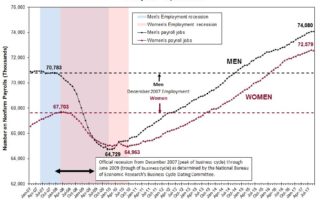Women’s Median Earnings as a Percent of Men’s, 1985-2016 (Full-time, Year-Round Workers) with Projections for Pay Equity, by Race/Ethnicity
If trends over the last 30 years continue, Hispanic women will not see equal pay with White men until 2233—216 years from now.







